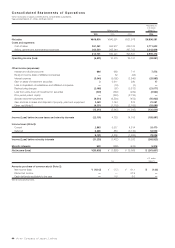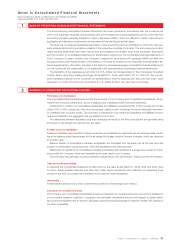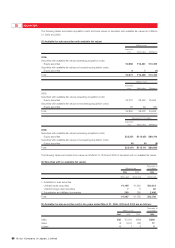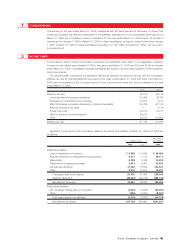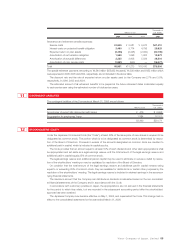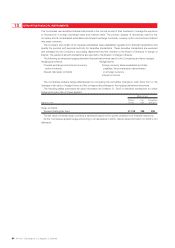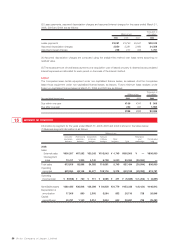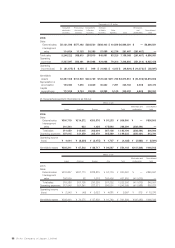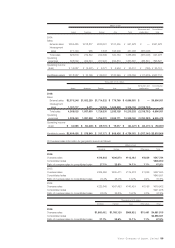JVC 2006 Annual Report Download - page 55
Download and view the complete annual report
Please find page 55 of the 2006 JVC annual report below. You can navigate through the pages in the report by either clicking on the pages listed below, or by using the keyword search tool below to find specific information within the annual report.
Victor Company of Japan, Limited 53
Thousands of
Millions of yen U.S. dollars
2006 2005 2004 2006
Severance and retirement benefits expenses:
Service costs ¥4,845 ¥05,581 ¥06,973 $41,410
Interest costs on projected benefit obligation 3,490 3,774 4,795 29,829
Expected return on plan assets (2,426) (2,348) (2,000) (20,735)
Amortization of net transition obligation 1,588 1,598 1,603 13,573
Amortization of actuarial differences 3,335 3,608 5,039 28,504
Amortization of prior service costs (1,881) (940) — (16,077)
Total ¥8,951 ¥11,273 ¥16,410 $76,504
The special retirement payments amounting to ¥6,544 million ($55,932 thousand), ¥6,530 million and ¥452 million which
were expensed in 2006, 2005 and 2004, respectively, are not included in the above table.
The discount rate and the rate of expected return on plan assets used by the Company are 2.7% and 3.0%,
respectively, in 2006, 2005 and 2004.
The estimated amount of all retirement benefits to be prepaid at the future retirement dates is allocated equally
to each service year using the estimated number of total service years.
CONTINGENT LIABILITIES
The contingent liabilities of the Companies at March 31, 2006 are as follows:
Thousands of
Millions of yen U.S. dollars
As endorser of export bills discounted with banks ¥0,476 $04,068
As guarantor for employees’ loans 1,884 16,103
¥2,360 $20,171
STOCKHOLDERS’ EQUITY
Under the Japanese Commercial Code (the “Code”), at least 50% of the issue price of new shares is required to be
designated as common stock. The portion which is to be designated as common stock is determined by resolu-
tion of the Board of Directors. Proceeds in excess of the amounts designated as common stock are credited to
additional paid-in capital, which is included in capital surplus.
The Code provides that an amount equal to at least 10% of cash dividends and other cash appropriations shall
be appropriated and set aside as a legal earnings reserve until the total amount of the legal earnings reserve and
additional paid-in capital equals 25% of common stock.
The legal earnings reserve and additional paid-in capital may be used to eliminate or reduce a deficit by resolu-
tion of the stockholders’ meeting or may be capitalized by resolution of the Board of Directors.
On condition that the total amount of the legal earnings reserve and additional paid-in capital remains being
equal to or exceeding 25% of common stock, they are available for distributions or certain other purposes by the
resolution of the stockholders’ meeting. The legal earnings reserve is included in retained earnings in the accompa-
nying financial statements.
The maximum amount that the Company can distribute as dividends is calculated based on the non-consolidat-
ed financial statements of the Company and in accordance with the Code.
In accordance with customary practice in Japan, the appropriations are not accrued in the financial statements
for the period to which they relate, but are recorded in the subsequent accounting period after the stockholders’
approval has been obtained.
The Japanese Company Law became effective on May 1, 2006, and superseded the Code. This change had no
effect to the consolidated statements for the year ended March 31, 2006.
12
11



